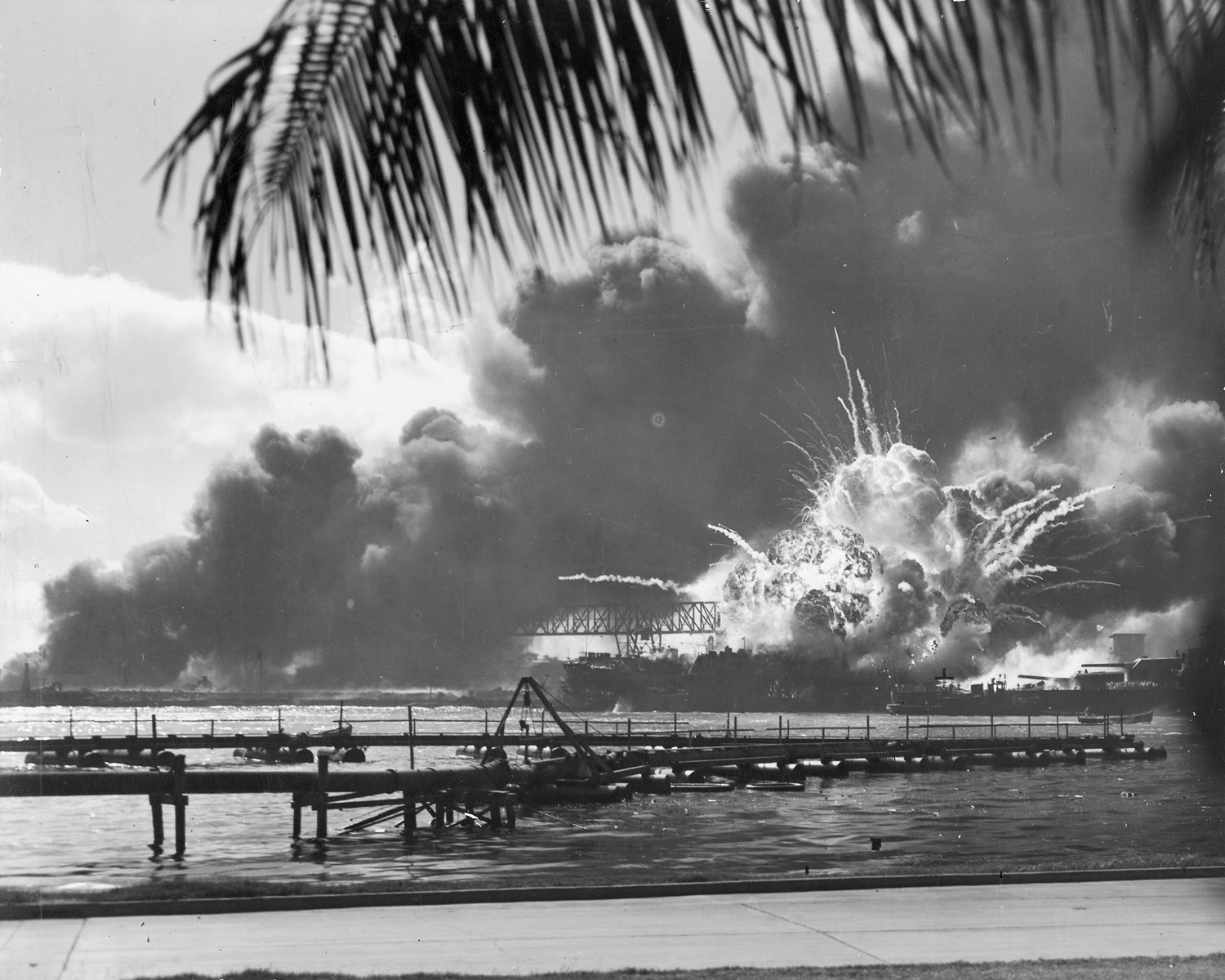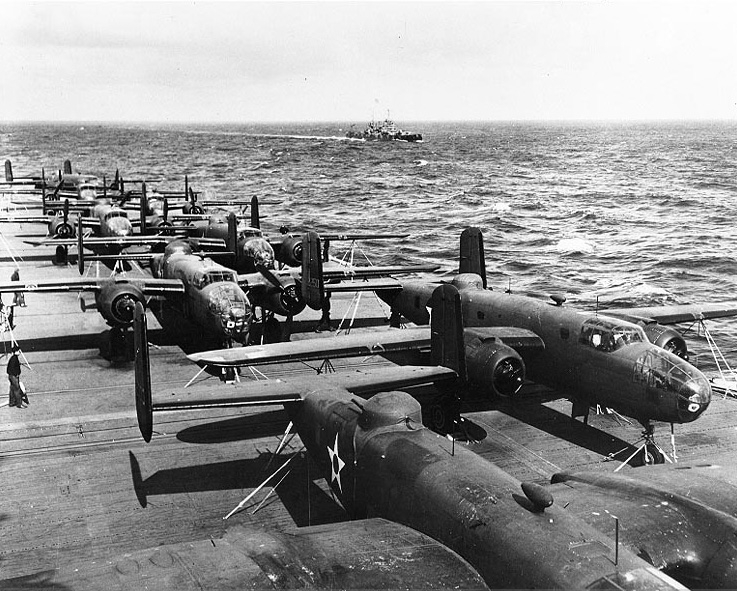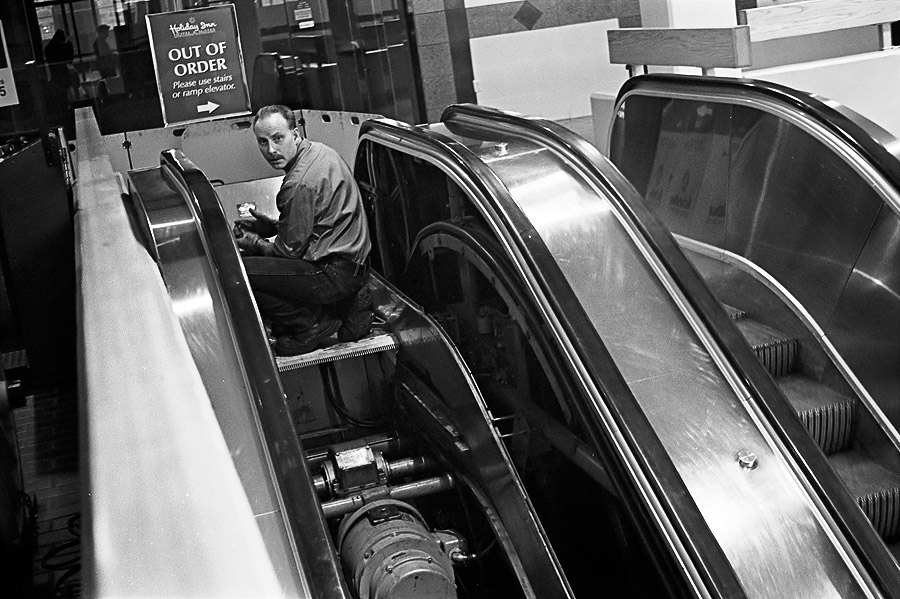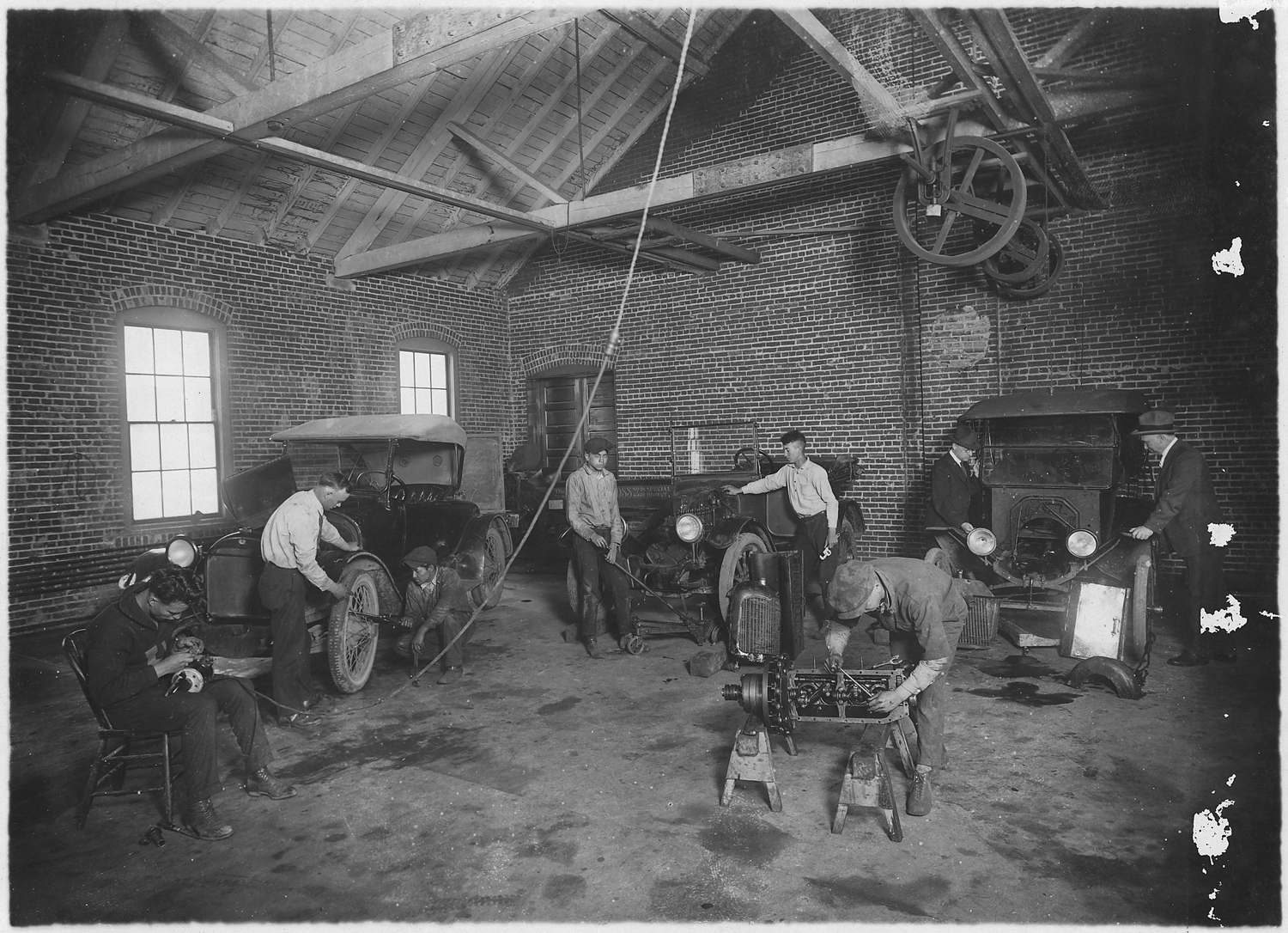Edward Saylor: Repairman
by Andy Boyd
Today, we fix things. The University of Houston presents this series about the machines that make our civilization run, and the people whose ingenuity created them.
On the eve of April 18, 1942, flight engineer Edward Saylor was facing long odds. He'd been chosen to man one of sixteen small bombers that would take-off from an aircraft carrier deep in the Pacific. It was four months since Japan had invaded Pearl Harbor and the U.S. was looking to strike the Japanese homeland in retaliation. But doing so relied on an especially dangerous strategy. The makeshift bombers couldn't land on the aircraft carrier. So the plan was to bomb Japan then fly unannounced to Chinese airfields.

A navy photographer snapped this photograph of the Japanese attack on Pearl Harbor in Hawaii on December 7, 1941, just as the USS Shaw exploded. Photo Credit:Wikimedia Commons
That night, as Saylor prepped for the following day, he discovered something that could put his mission in jeopardy. If it couldn't be fixed, the plane would be dumped overboard and the crew would ride home aboard the ship. But Saylor wanted no part of that. Together with the ship's crew, he removed the ailing engine amid ocean swells so large that anything not lashed to the deck would roll overboard. Once below deck, Saylor and the crewmen disassembled the engine. By morning they'd done their best to fix the problem and had reattached it to the plane. When asked by a crewmate whether he thought the engine would work, Saylor replied, "Well, there weren't any parts left over."

View from the island of the U.S. Navy aircraft carrier USS Hornet (CV-8), while en route to the "Doolittle Raid" mission's launching point. Photo Credit: Wikimedia Commons
And the repair did, in fact, work. Saylor joined the four other members of his flight crew on what must have been a harrowing take-off and flight. The plane successfully reached its target, but didn't have sufficient fuel to reach an airfield and was forced to ditch in the sea off China's coast. Saylor's plane wasn't alone in that regard. Not one of the sixteen planes made it to an airfield. Of the eighty men that took off that day, one in seven never made it back to the U.S. Saylor's crew paddled to the Chinese shore in a life raft and took refuge in an animal pen where they were discovered by the pen's owner. The following morning, dressed as fishermen, the airmen were stowed away in a Chinese junk and smuggled by members of the local community through a Japanese blockade and eventually made their way to the U.S. Saylor went on to lead a long and happy life. He and his wife celebrated sixty-nine wedding anniversaries and lived to welcome great-great-grandchildren.
Saylor's story is one of courage and conviction, but something else as well: the often overlooked repairman. Whether craftsmen with specialized skills or simply passionate souls armed with duct tape and WD-40, repairmen keep the world going. While we idolize the innovator, we all too often fail to even recognize the people who fix things. The technician at the office we call for help with our computers. The administrative assistant who juggles schedules and personalities to keep the office running. The homeowner who's become a jack-of-all-trades caring for the family house. Each act of repair, large or small, contributes to making the same-old the same-old; to keeping our busy world from grinding to a halt. And each act, in its own way, is deserving of a special pat on the back.

A repair man working on an escalator. Photo Credit: Flickr

Students at work in an auto repair shop. Photo Credit: Wikimedia Commons
I'm Andy Boyd, at the University of Houston, where we're interested in the way inventive minds work.
(Theme music)
For a related episode, see DOOLITTLE'S RAID.
Many thanks to Jim Bell for not only suggesting the idea for this essay, but for bringing the research material to my attention.
K. Davis. "'Doolittle Raider' Saylor Dies at 94." Air Force Times January 29, 2015. See also: http://www.airforcetimes.com/story/military/2015/01/29/doolittle-raider-edward-saylor-dies/22529753/. Accessed May 31, 2016.
This episode was first aired on June 2, 2016